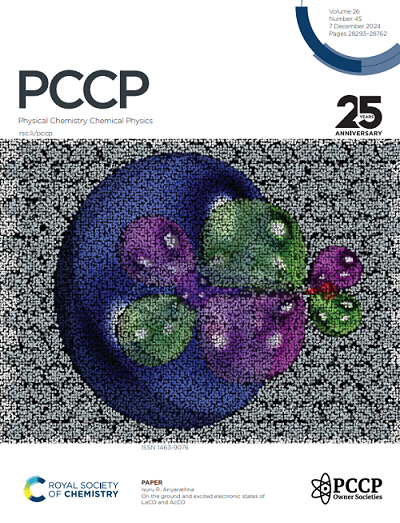X-ray absorption spectroscopy reveals charge transfer in π-stacked aromatic amino acids
IF 2.9
3区 化学
Q3 CHEMISTRY, PHYSICAL
引用次数: 0
Abstract
X-ray absorption spectroscopy (XAS) and quantum mechanical calculations bear great potential to unravel π stacking side-chain interaction properties and structure in, e.g., proteins. However, core-excited state calculations for proteins and their associated interpretation for π-π interactions are challenging due to the complexity of the non-covalent interactions involved. A theoretical analysis is developed to decompose the core-to-valence transitions into their atomic contributions in order to characterize the π stacking of aromatic amino acids as a function of their non-covalent distance change. Three models were studied as a non-covalent mixed dimers of the phenylalanine, tyrosine and tryptophan amino acids. We found that there are carbon 1s → π∗ charge transfer transitions associated with the non-covalently paired aromatic amino acids through their side chains. The atomic-centered contributions to the electronic transition density quantify the excited state charge transfer of the pairing amino acid models, highlighting the π stacking interactions between their aromatic side chains.求助全文
约1分钟内获得全文
求助全文
来源期刊

Physical Chemistry Chemical Physics
化学-物理:原子、分子和化学物理
CiteScore
5.50
自引率
9.10%
发文量
2675
审稿时长
2.0 months
期刊介绍:
Physical Chemistry Chemical Physics (PCCP) is an international journal co-owned by 19 physical chemistry and physics societies from around the world. This journal publishes original, cutting-edge research in physical chemistry, chemical physics and biophysical chemistry. To be suitable for publication in PCCP, articles must include significant innovation and/or insight into physical chemistry; this is the most important criterion that reviewers and Editors will judge against when evaluating submissions.
The journal has a broad scope and welcomes contributions spanning experiment, theory, computation and data science. Topical coverage includes spectroscopy, dynamics, kinetics, statistical mechanics, thermodynamics, electrochemistry, catalysis, surface science, quantum mechanics, quantum computing and machine learning. Interdisciplinary research areas such as polymers and soft matter, materials, nanoscience, energy, surfaces/interfaces, and biophysical chemistry are welcomed if they demonstrate significant innovation and/or insight into physical chemistry. Joined experimental/theoretical studies are particularly appreciated when complementary and based on up-to-date approaches.
 求助内容:
求助内容: 应助结果提醒方式:
应助结果提醒方式:


